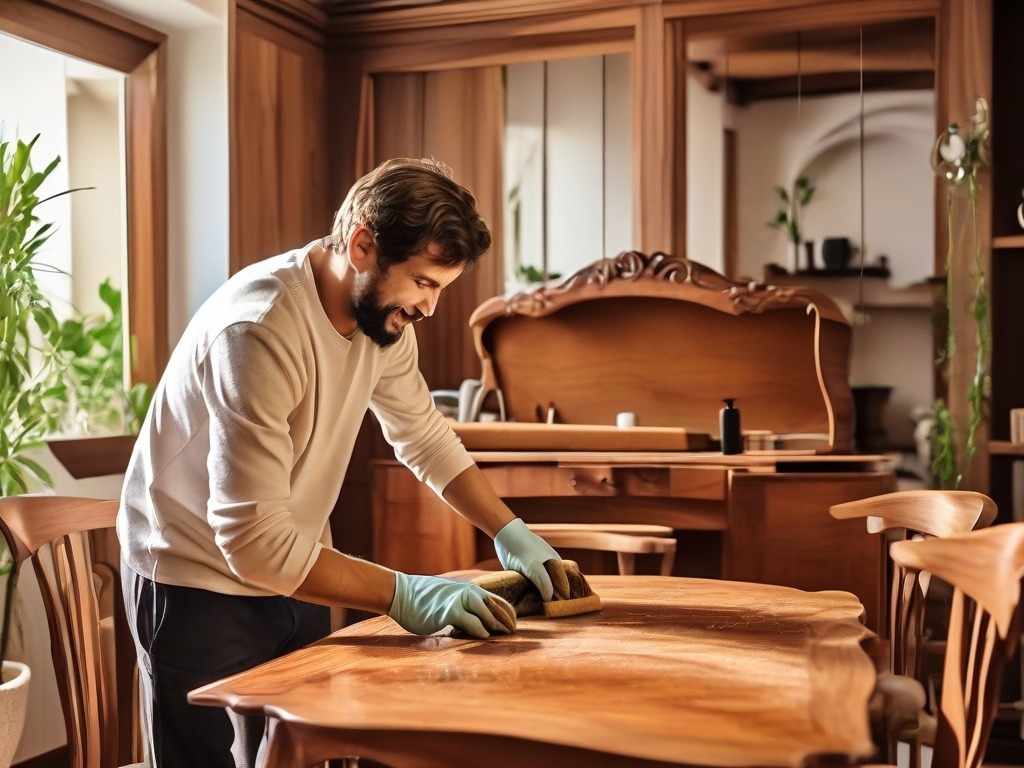
Introduction: Importance of Cleaning Wooden Furniture
In this article we are discussing how to clean wooden furniture at your home with DIY. Wooden furniture carries a story, often woven through generations or crafted from trees that have stood the test of time. Cleaning this cherished investment goes beyond mere aesthetics; it’s about preserving its intrinsic value and character.
Dust, grime, and moisture can accumulate silently over time, leading to dull finishes and potential damage if neglected. A simple cleaning routine not only enhances the beauty of your wooden pieces but also extends their lifespan, ensuring they remain a focal point in your home for years to come.
Additionally, regular maintenance serves as an opportunity to connect with your furniture on a deeper level. As you dust each surface or polish with care, you’re engaging in an act that honors its craftsmanship—recognizing the unique grains and textures that make each piece one-of-a-kind.
In our fast-paced lives filled with mass-produced items, taking the time to clean wooden furniture fosters mindfulness and appreciation for sustainable decor choices. Embracing cleaning rituals helps transform wooden furniture from mere objects into treasured companions within your living space.
Understanding Different Wood Finishes
When it comes to maintaining wooden furniture, understanding the various wood finishes is crucial for effective cleaning and preservation. Each finish—be it lacquer, varnish, oil, or polyurethane—offers unique characteristics that affect how you should care for your piece.
For instance, lacquer provides a durable sheen but can be sensitive to heat and solvents; thus, gentle cleaning with a damp cloth is often recommended. In contrast, an oiled finish allows the grain to breathe and enhances tactile quality but requires more frequent conditioning to prevent dullness.
Additionally, matte finishes are becoming increasingly popular due to their ability to hide fingerprints and dust elegantly. However, these surfaces may demand specific cleaners designed not to disrupt their subtle allure.
Understanding the interplay of these finishes not only helps in appropriate cleaning techniques but also informs you about the long-term care required for each type. Embracing this knowledge will extend your furniture’s lifespan while ensuring it maintains its natural beauty through every season of life at home.
Essential Tools for Cleaning Wooden Furniture
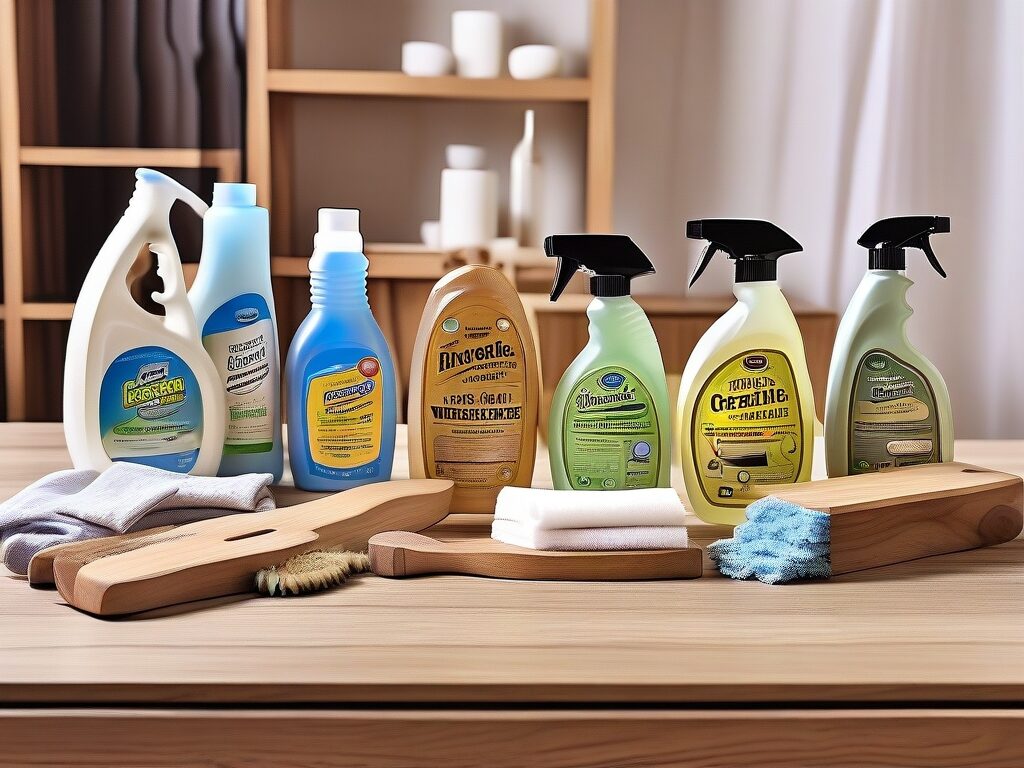
When it comes to maintaining the beauty of wooden furniture, selecting the right cleaning tools is just as crucial as choosing the proper technique.
Microfiber cloths are a game-changer; their soft fibers lift dust without scratching delicate surfaces, making them perfect for regular dusting. Additionally, consider using natural oils, such as lemon or olive oil mixed with vinegar. This eco-friendly solution not only cleans but also nourishes wood, enhancing its sheen and extending its life.
Don’t overlook the power of a good quality soft-bristled brush—ideal for getting into those hard-to-reach crevices where dirt tends to accumulate. For stubborn stains or sticky residues, a gentle scrubbing pad can be beneficial; however, always test in an inconspicuous area first to avoid damage.
Lastly, invest in high-quality wood polish or wax that suits your furniture type; this final touch helps lock in moisture and creates a protective barrier against potential scratches and wear. By utilizing these essential tools wisely, you can keep your wooden treasures looking stunning year after year.
Dusting Techniques for Wooden Surfaces
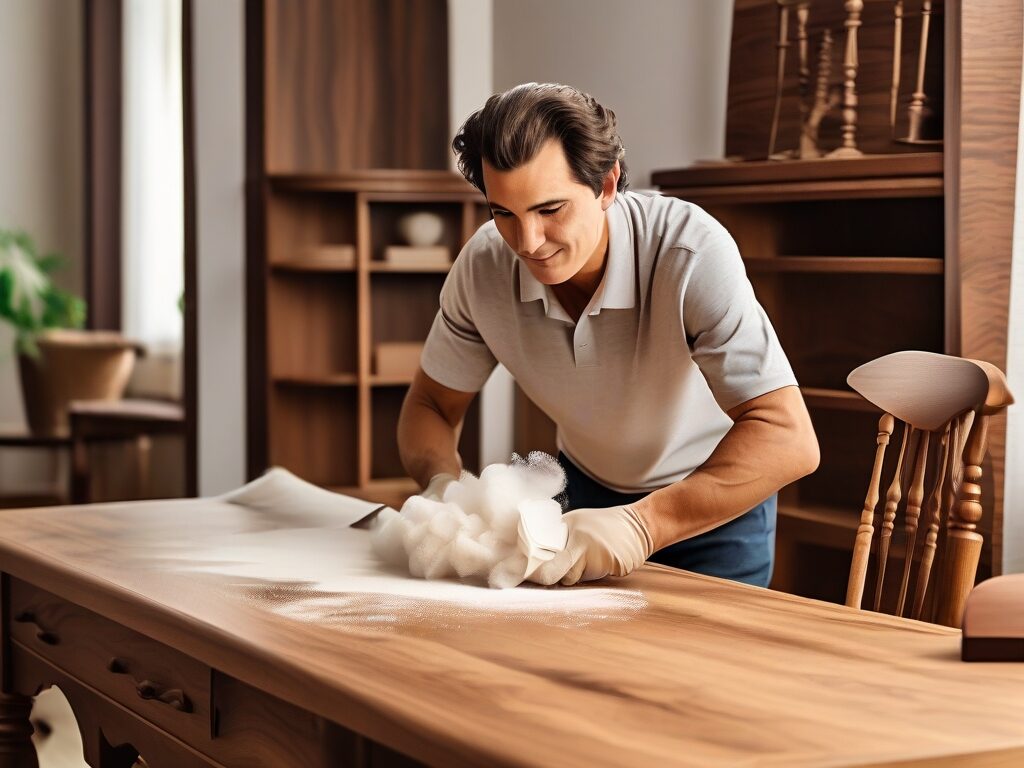
When it comes to dusting wooden surfaces, the choice of tools and techniques can significantly impact not only cleanliness but also the longevity of your furniture. Instead of reaching for a traditional feather duster, consider using microfiber cloths; these traps and hold dust particles more effectively without scattering them into the air.
For intricate carvings or hard-to-reach corners, consider a soft-bristle brush. This specialized tool ensures that even the tiniest grooves in your furniture are free from dust buildup while minimizing potential scratches.
Moreover, embracing a systematic approach can enhance your cleaning routine. Start from the top-most surfaces—such as shelves or cabinets—and work your way down to avoid re-dusting lower pieces.
A light mist of water—or better yet, a mixture of equal parts vinegar and olive oil—on your microfiber cloth can add an element of shine as you wipe down surfaces, while also helping to lift stubborn dirt without leaving behind residue.
By adopting these insights into your cleaning regimen, not only do you maintain the beauty of your wooden furniture but also create an inviting atmosphere that reflects care and attention to detail in every corner of your home.
Choosing the Right Cleaning Solution
When it comes to cleaning wooden furniture, choosing the right cleaning solution is crucial for maintaining its beauty and longevity. Not all wood finishes are created equal; some are sealed with varnish or lacquer, while others may have an oil or wax finish.
This variation means that a one-size-fits-all approach can do more harm than good. For example, using water-based cleaners on oiled wood can strip away essential oils, leading to dryness and potential cracking over time. Therefore, it’s important to identify the finish on your wooden piece before selecting a cleaner.
Natural solutions often shine in this context. A mixture of olive oil and vinegar can gently clean and condition wood without harsh chemicals, offering a two-for-one benefit: cleanliness coupled with nourishment!
Additionally, specialty products designed specifically for wood care typically contain ingredients that penetrate the surface to lift dirt while ensuring no residue remains behind. Always spot-test any new solution in an inconspicuous area first—this quick step can safeguard against unexpected reactions and help you discover what truly works best for your cherished pieces.
Step-by-Step Cleaning Process
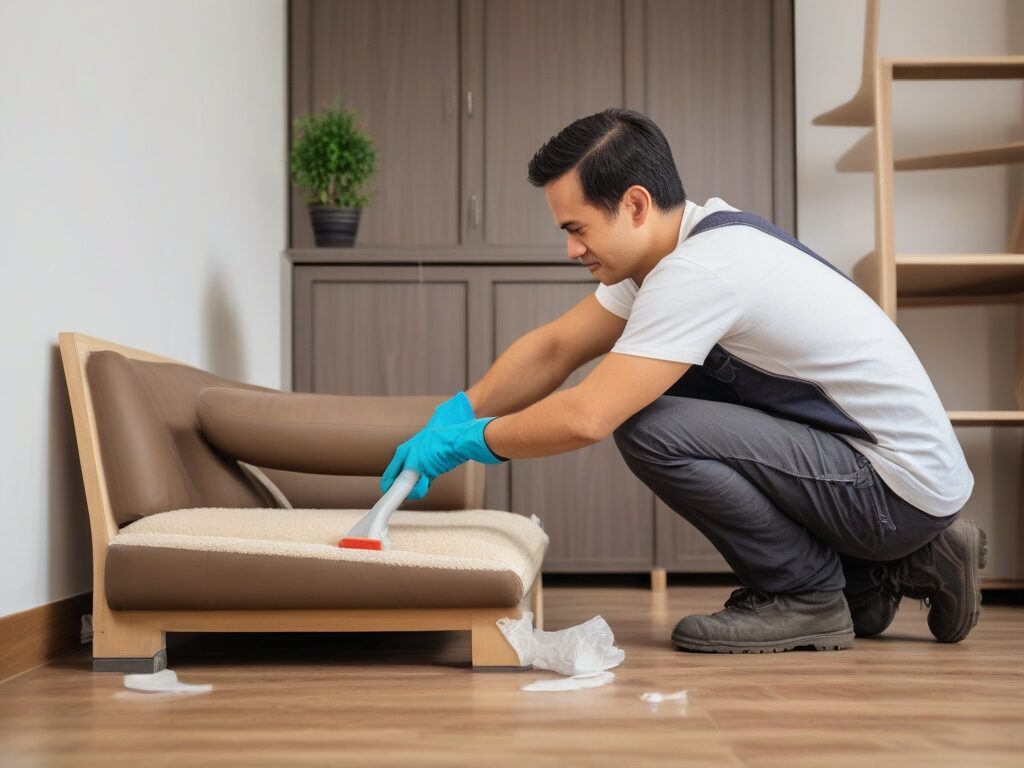
Begin your cleaning process by dusting the wooden furniture with a soft, lint-free cloth or a microfiber duster. This simple step helps remove surface dust and prevents scratches during deep cleaning. Always remember to wipe in the direction of the wood grain; this not only ensures a more thorough clean but also preserves the integrity of the finish.
Next, prepare a gentle cleaning solution—mix equal parts white vinegar and olive oil for an effective yet safe method to refresh your wood’s luster. Apply this mixture sparingly with another clean, soft cloth, using light circular motions rather than excessive pressure to avoid damaging the surface. Once you’ve wiped down all areas, follow up with a dry cloth to buff out any remaining residue, leaving behind a natural shine.
To protect your furniture long-term, consider applying a beeswax or professional-grade wax finishing product every few months. This layer acts as both nourishment for the wood and protection against wear from daily use.
Remember that different types of finishes may require specific care; therefore, researching your furniture’s finish can be beneficial in tailoring your approach for optimal results. Through these steps, you’ll not only maintain your pieces but also enhance their beauty over time.
Dealing with Stains and Scratches of Wooden Furniture
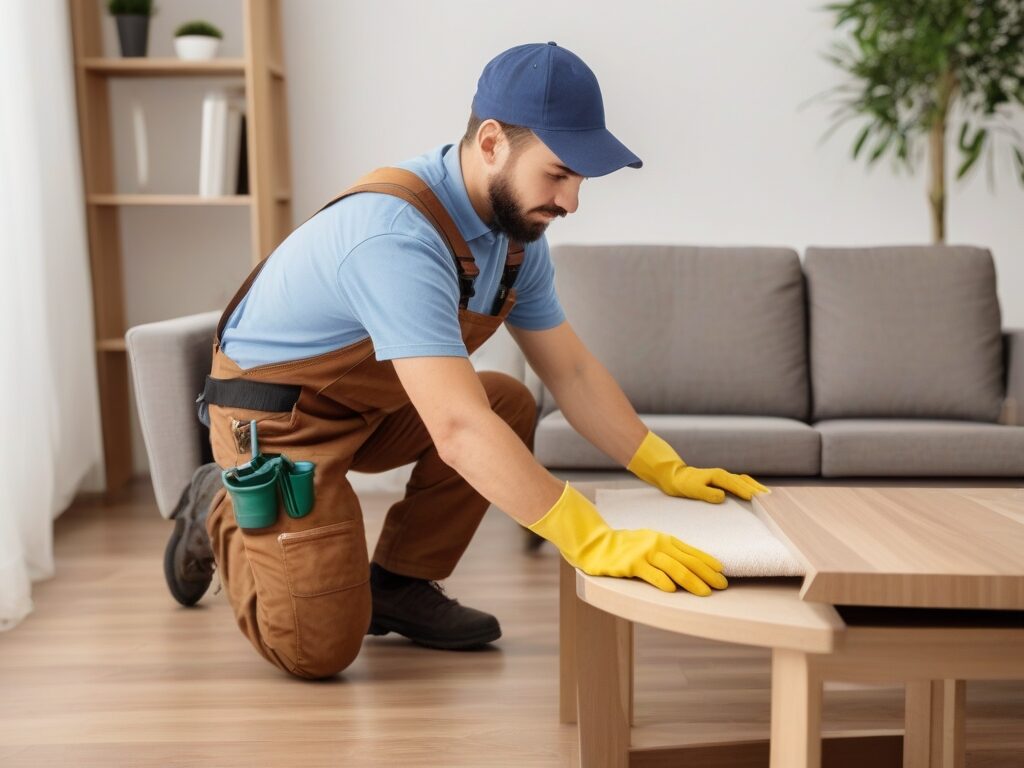
Stains and scratches on wooden furniture can be daunting, but they also present an opportunity for creativity in restoration. Instead of resigning yourself to the imperfections, consider using a combination of natural remedies that not only address the damage but enhance the wood’s character.
For deep stains, a paste made from baking soda and water can work wonders; gently rub it into the stain with a soft cloth to lift away discoloration without harming the finish. For scratches, try blending equal parts olive oil and vinegar—this mixture nourishes the wood while camouflaging those pesky marks.
Another innovative approach involves using a walnut or almond. The oils naturally found in these nuts can soften scratch marks when rubbed over them, helping to fill in gaps and make them less visible. This quick fix is perfect for when you need immediate results without resorting to complicated refinishing processes.
It’s all about embracing your furniture’s history—from minor scars that tell stories of family gatherings to worn spots that speak to years of love; each mark contributes to its unique charm. With patience and some creative solutions, you’ll breathe new life into your wooden treasures while cherishing their journey along with yours.
Tips for Maintaining Wooden Furniture Shine
To maintain the luster of your wooden furniture, consider implementing a routine that goes beyond mere cleaning. Regular dusting with a soft, microfiber cloth will prevent scratches while ensuring that dirt and grime don’t build up over time.
For a deeper shine, use an occasional mix of olive oil and vinegar—this natural solution not only cleans but also nourishes the wood. Apply it sparingly to avoid excess residue; just a few drops can elevate dull furniture back to life.
Additionally, protect your pieces from harsh sunlight and extreme temperatures by rearranging them or using light-filtering curtains. UV rays can fade finishes and damage wood fibers, so being proactive about their placement makes all the difference.
Finally, invest in coasters for beverages and placemats for dining items; these small additions help shield surfaces from rings and scratches while maintaining that radiant look for years to come. With just these simple practices, you’ll ensure your wooden treasures remain as stunning as the day you brought them home.
When to Seek Professional Help

While many cleaning tasks can be tackled with homemade solutions and elbow grease, there are specific scenarios where seeking professional help becomes essential for the longevity and beauty of your wooden furniture.
If you notice deep scratches, water stains, or warped surfaces that resist traditional cleaning methods, it’s a strong indicator that an expert’s touch is warranted. Professional furniture restorers possess specialized tools and techniques that can revive your beloved pieces without causing further damage.
Another crucial moment to consider professional assistance is when dealing with antique or high-value items. These pieces often require delicate care; using the wrong method could not only diminish their value but also destroy their historical integrity.
An experienced restorer understands both the aesthetic and cultural significance of these treasures, ensuring they receive the treatment they deserve while preserving their unique story. Ultimately, recognizing when to call in a pro not only protects your investment but also enhances the soul of your home through beautifully maintained furnishings.
Conclusion: Enjoy Your Beautiful Wooden Furniture
Incorporating beautiful wooden furniture into your home is not just a nod to timeless elegance; it’s an investment in craftsmanship and character. Each piece tells a story, from the grains that reflect its age to the distinct patterns that add personality to your space.
By committing to a cleaning regimen, you not only preserve their beauty but also enhance the natural charm that wood exudes. Imagine hosting gatherings where your meticulously maintained table becomes a conversation starter, drawing admiration and sparking memories.
Moreover, caring for wooden furniture extends beyond cleanliness—it’s about fostering an environment that resonates with warmth and comfort.
Regular maintenance can prevent wear and tear while allowing you to appreciate the evolving appearance of each item as it matures over time. Instead of viewing cleaning as a chore, approach it as a ritual that deepens your connection with your living space.
So embrace those moments spent polishing or dusting off surfaces; each effort is another step towards ensuring these cherished pieces remain central to your home’s narrative for years to come.



